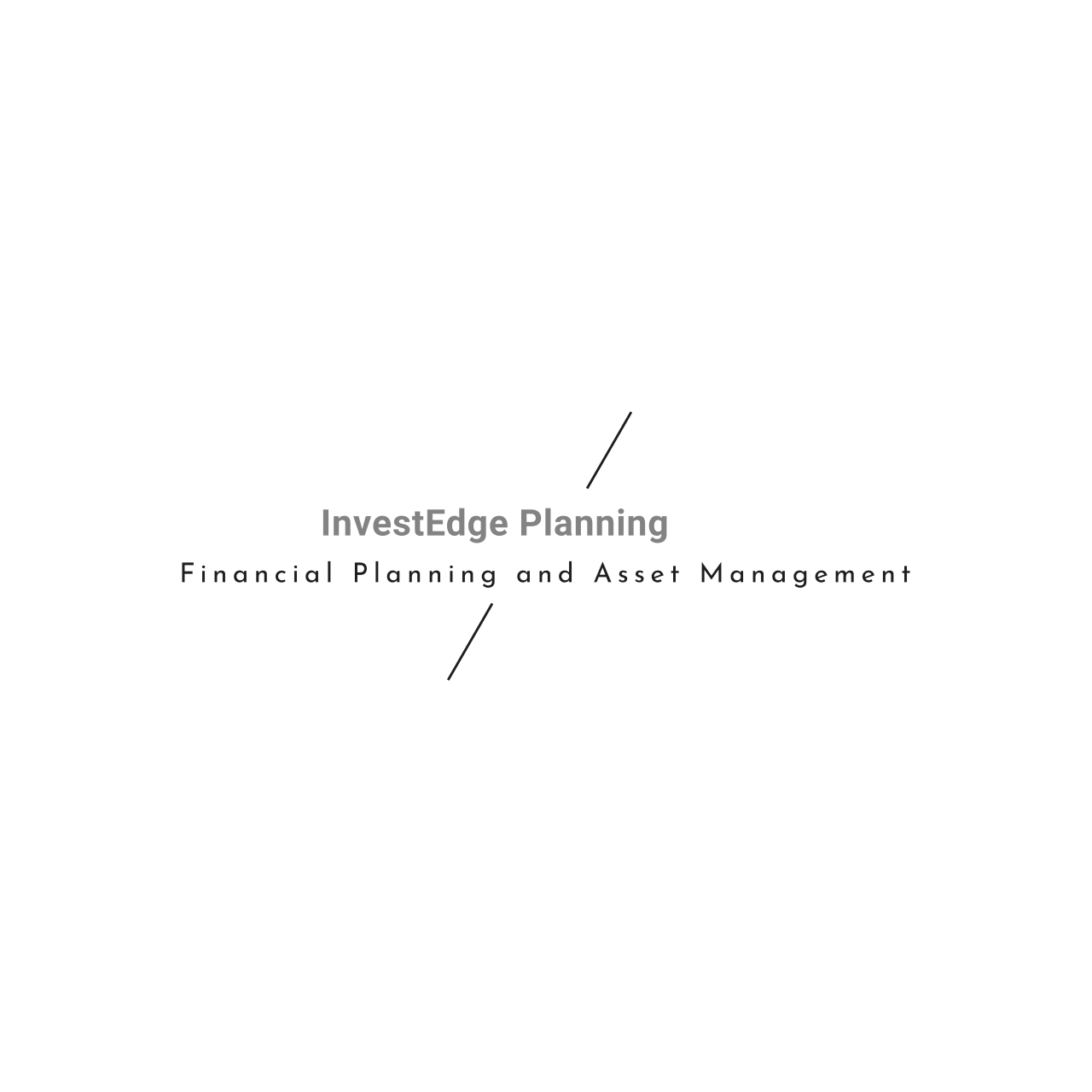
Shannon Grey, CFP®, CRPC®, MPAS®
Managing Director InvestEdge Planning

Is Your Portfolio Ready for 2025?
A new presidential administration will be working towards a very different agenda, and it will play out against the backdrop of a changed inflation and interest rate environment. Everything has changed from where it was at this time last year, which may mean that the short-term positioning of your portfolio should be shifted to be in line with potential opportunities and challenges. In addition, an extremely strong equity market last year may have resulted in position sizes growing beyond your acceptable risk parameters.
How can you get your portfolio in shape to help you continue to meet both short-term and long-term goals, while still letting you sleep at night?
Are You Diversified?
Equities and bonds have historically been negatively correlated, meaning that when market or economic factors drive one down, the other is usually up. This reflects a push-and-pull between these two asset classes that is partly driven by investor behavior.
Equities generally carry more risk than bonds but may offer more return. Environments in which the prospects for equities are positive result in investors piling into equity positions and pulling money out of bonds. When investors are concerned about economic conditions, the "risk-off" trade goes into effect, and investors exit equity positions for the relative safety of bonds.
This has worked for decades, but there are some environments when equities and bonds move in tandem. When they both go up, like 2024, it’s not a bonus. When higher inflation, sharp interest rate movements or increasing volatility send both stocks and bonds down, the cushioning effect on your portfolio doesn’t work. How can you prepare?
Assess your existing portfolio:
Are you diversified across geographies, sectors, and industries?
Are you well diversified in the number of positions you hold? If you are invested in mutual funds, you may hold hundreds of positions. If you are buying individual stocks, or you hold your company’s stock, you may be too concentrated.
Are you diversified across strategies? Different strategies perform well at different times. Value and growth stocks may each have a place in your portfolio.
Have you thought about capitalization? Large Cap, Mid Cap and Small Cap stock all have different risk/return profiles.
Assets that are not correlated to the public markets—meaning either equities or bonds—may provide sources of diversification. These may include real estate, commodities, private equity, and private credit.
Have market moves resulted in positions that have crept above or fallen below your target allocations? This can result in overconcentration. Consider a rebalancing strategy that incorporates tax-loss harvesting.
Tax-Loss Harvesting and Re-Deploying Cash
Once you’ve identified where your portfolio is out of line with your target allocation, you’ll need to determine what to sell. Keep in mind:
The IRS has created a hierarchy for how losses can be used to offset gains. Short-term losses offset short-term gains, and long-term losses offset long-term gains. If your short-term losses exceed your short-term gain, the excess can be applied to long-term gains and vice-versa.
If you are selling a position you acquired over time at different costs, look at the cost basis and maximize your tax benefits by selling the highest-cost-basis shares.
Once your strategy for selling is in place, you need to consider how to redeploy the cash that results. Markets are likely to be volatile and spiky while the agenda of the new administration comes into focus. Markets hate uncertainty, and until a clear legislative agenda and an assessment of the new president’s priorities is revealed, this could result in some very dramatic market swings.
Reinvesting the proceeds of sales all at once can leave you vulnerable to large market shifts. One approach to avoid this is dollar-cost averaging. In this strategy, you invest the same amount each month regardless of how the market performs. The goal is to help you make consistent investments and avoid ill-timed decisions because you're buying in at every price point.
Cash is Still Earning a Decent Return
While interest rates have come down, certificates of deposit and some savings accounts are still paying significant amounts of interest. Does this mean cash should be a bigger piece of your investment strategy? A better way to answer the question is to think about the role of cash.
If you're still working, you should have enough in cash to cover three-to-six months of living expenses. Think about this as an insurance policy. You want your insurance policy to cover the replacement value of the asset, like a car or a house. Translating this to your rainy day fund, you want to have enough saved to cover all your expenses, not just the big things.
If you're retired, you may want to keep as much as three-to-five years of living expenses in cash. Having a cushion this big can help you ride out downturns in the market without having to draw from investments.
In either case, this is already a substantial sum. Does it make sense to pull even more of your assets out of higher-growth potential assets? Probably not. However, it can add meaningfully to your cash investment to rethink where you are holding it. There are likely better options if your savings account is still paying near zero.
The Bottom Line
Good years in the market mean that you can get a jump on your goals. But keeping those gains means looking carefully at your portfolio, your risk tolerances and your investment strategies, to be sure that you are in a good position to face whatever 2025 may bring. It can pay to invest time in tuning up your portfolio so it can be positioned to ride out volatility.
This work is powered by Advisor I/O under the Terms of Service and may be a derivative of the original.
The information contained herein is intended to be used for educational purposes only and is not exhaustive. Diversification and/or any strategy that may be discussed does not guarantee against investment losses but are intended to help manage risk and return. If applicable, historical discussions and/or opinions are not predictive of future events. The content is presented in good faith and has been drawn from sources believed to be reliable. The content is not intended to be legal, tax or financial advice. Please consult a legal, tax or financial professional for information specific to your individual situation.
This content not reviewed by FINRA
Disclosure information
InvestEdge Planning LLC is a registered investment advisor offering advisory services in the State of California and Arizona and in other jurisdictions where exempted. Registration does not imply a certain level of skill or training. The information on this site is not intended as tax, accounting, or legal advice, as an offer or solicitation of an offer to buy or sell, or as an endorsement of any company, security, fund, or other securities or non-securities offering. This information should not be relied upon as the sole factor in an investment-making decision. Past performance is no indication of future results. Investment in securities involves significant risk and has the potential for partial or complete loss of funds invested. It should not be assumed that any recommendations made will be profitable or equal any performance noted on this site. The information on this site is provided “AS IS” and without warranties of any kind either express or implied. To the fullest extent permissible pursuant to applicable laws, InvestEdge Planning LLC disclaims all warranties, express or implied, including, but not limited to, implied warranties of merchantability, non-infringement, and suitability for a particular purpose. InvestEdge Planning LLC does not warrant that the information on this site will be free from error. Your use of the information is at your sole risk. Under no circumstances shall InvestEdge Planning LLC be liable for any direct, indirect, special or consequential damages that result from the use of, or the inability to use, the information provided on this site, even if InvestEdge Planning LLC or InvestEdge Planning LLC's authorized representative has been advised of the possibility of such damages. Information contained on this site should not be considered a solicitation to buy, an offer to sell, or a recommendation of any security in any jurisdiction where such offer, solicitation, or recommendation would be unlawful or unauthorized. Opt-out of future communications by emailing shannongrey@investedgeplanning.com.